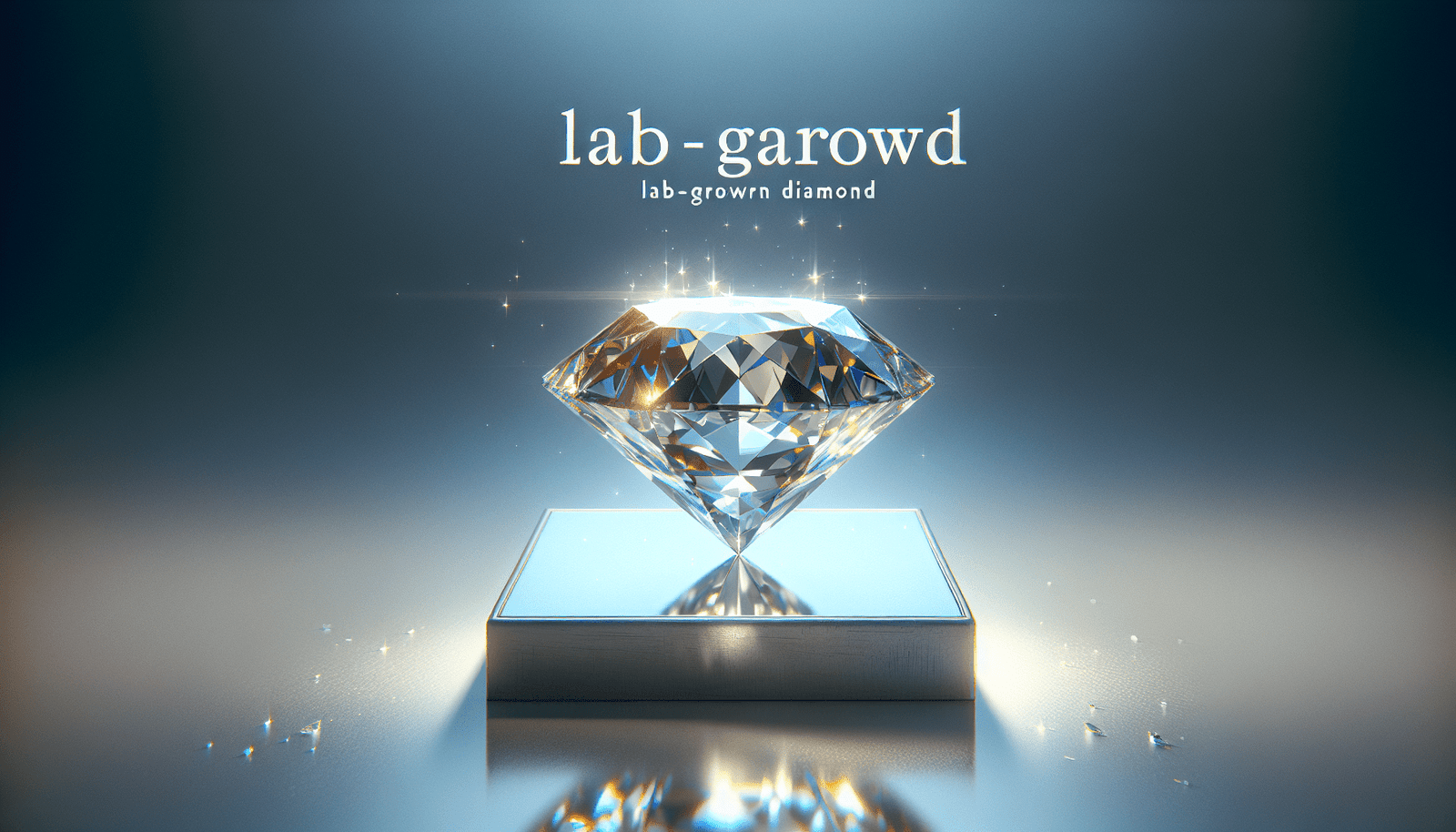Have you ever wondered what has transformed the jewelry industry in recent years? Spoiler alert: it’s not just another catchy marketing campaign. The U.S. jewelry market, valued at a staggering $73 billion, is undergoing a significant shift thanks to lab-grown diamonds (LGDs). Yes, those sparkling stones you see gracing engagement rings and necklaces might just be the product of a scientific breakthrough rather than Mother Nature’s handiwork.

The Rise of Lab-Grown Diamonds
So, what exactly are lab-grown diamonds? Unlike natural diamonds, which take billions of years to form deep within the Earth’s mantle, LGDs are created in laboratories using cutting-edge technology. It’s almost like brewing a perfect cup of coffee, except it takes a bit longer and involves a lot more science.
The Science Behind Lab-Grown Diamonds
You might be picturing a mad scientist in a hidden lab, but the reality is a bit more glamorous. Lab-grown diamonds are made using two primary methods: High Pressure-High Temperature (HPHT) and Chemical Vapor Deposition (CVD). These methods replicate the natural conditions under which diamonds form.
- HPHT mimics the extreme pressure and temperature found beneath the Earth’s surface.
- CVD, on the other hand, involves a tiny diamond seed placed in a chamber filled with carbon-rich gas, which then crystallizes to form a diamond.
Either way, the result is a gem that is chemically, physically, and optically identical to its naturally occurring counterpart. The only difference? You didn’t have to pay a premium for it.
Market Share and Revenue
Here’s a fun fact: LGDs currently account for one-fourth of U.S. diamond retail revenues. If numbers aren’t your thing, think of it this way—every fourth diamond sold in the U.S. likely came from a lab. In terms of unit share, LGDs are nearing 60%, including 50% for engagement rings alone. Yes, that’s a lot of “I do’s” being said with a lab-grown sparkle.
LGDs are appealing for all the right reasons. They’re generally cheaper, offering a lower-cost alternative to natural diamonds while also being ethically produced. No wonder they’re winning over consumers, especially younger generations who are more conscious about both their finances and the planet.
The Surge of Colored Gemstones
Just when you thought it couldn’t get more colorful, let’s talk about another trend—colored gemstones. These gems are giving traditional diamonds a run for their money. Led by increasing consumer interest, particularly among younger generations, colored gemstones are gaining significant market share.
The Appeal of Colored Gemstones
Colored gemstones include both precious and semi-precious stones such as sapphires, emeralds, and rubies. Unlike diamonds, they come in a variety of colors and shades, allowing for more personalized and unique jewelry pieces. It’s like having a crayon box where every color tells its own story.
Younger consumers are increasingly opting for colored gemstones in their jewelry choices. It’s not just about being different; it’s about making a statement. These stones can signify personal milestones, favorite colors, and even ethical choices, aligning with the values of a more discerning customer base.
Trends and Market Impact
Think about this: Angara LLC, a direct-to-consumer jewelry company, focuses extensively on colored gemstones. Founded by Ankur and Aditi Daga in 2005, Angara generates 80% of its revenue from these vibrant stones. This figure is not just a statistic; it’s a clear signal that colored gemstones are not a fleeting trend but a burgeoning market force.

This image is property of specials-images.forbesimg.com.
Angara’s Revolutionary Approach
Speaking of Angara, how does a company capture such a significant market share? The answer lies in a mix of innovation, technology, and a keen focus on customer experience.
Technology Integration
Let’s talk tech for a moment. Angara uses an AI-powered “Create with Angara” app that allows consumers to custom-design their jewelry. Imagine picking every detail of your jewelry—from the type of gemstone to the setting, metal, and even the tiny accents. It’s like being your own jewelry designer without the years of training and hefty tuition fees.
This level of customization appeals to the modern consumer who wants their jewelry to reflect their unique personality. Plus, it’s a fantastic way to engage customers, making the shopping experience interactive rather than transactional.
Customer-Centric Philosophy
Ankur Daga emphasizes a customer-focused approach. With a catalog featuring over 10,000 SKUs, Angara offers both diamonds and colored gemstones, providing a wide range of options to suit different tastes and budgets. This extensive selection is complemented by exceptional customer service, ensuring satisfaction from the moment you place your order to when you unbox your stunning piece of jewelry.
Market Reach
Angara is not content with just domestic success. The company aims to extend its market reach globally, planning to cover 70% of the global jewelry market by next year. Now that’s an ambitious goal. But if their current trajectory and innovative strategies are any indication, they are well on their way to achieving it.
Acknowledgments and Accolades
Every success story is peppered with a bit of recognition. Angara has received several accolades and industry recognition for its innovative marketing campaigns and high levels of customer satisfaction. These awards aren’t just shiny trophies; they serve as validation for the company’s inventive approach and resolute customer focus.

The Future of Angara
Things are looking bright, not just in terms of gemstones, but for Angara’s future. The company aims to hit $1 billion in sales by the end of the decade. That’s a tall order, but considering their focus on innovation and customer satisfaction, it seems entirely within reach.
Continued Focus on Colored Gemstones
Ankur believes in sticking to their core while expanding their horizons. Angara is determined to maintain its focus on colored gemstones and pearls, recognizing the unique appeal and market demand for these stones. This focus is not about resting on their laurels but about refining and expanding their expertise.
Global Expansion
With planned global market expansion, Angara is looking to adapt its unique customer-centric model to different markets worldwide. This means adopting local tastes while maintaining the core competencies that set Angara apart.
Why This Matters to You
Alright, let’s bring this full circle. Why should you care about LGDs and this colorful gemstone trend? Well, for starters, if you’re in the market for jewelry, this means more options and lower costs without compromising on quality. It’s like getting to choose between your favorite pizza toppings without worrying about emptying your wallet.
Moreover, these trends are also pushing industry standards. Ethical production, sustainability, and transparency are becoming must-haves rather than nice-to-haves. Companies are being held accountable, and that’s good news for everyone—from miners to consumers.

What to Look Forward To
So, what’s next? More innovation, more options, and likely, more affordable and ethical jewelry pieces. Companies like Angara are setting the bar high, ensuring that both lab-grown diamonds and colored gemstones remain at the forefront of the jewelry market.
If you’re a fan of unique, customizable pieces that reflect your style and values, then the future looks pretty sparkling, don’t you think? Whether you opt for a classic diamond or a vibrant emerald, the jewelry market’s transformation offers something for everyone.
So go on, embrace the sparkle. Your jewelry box is about to get a whole lot more interesting.
